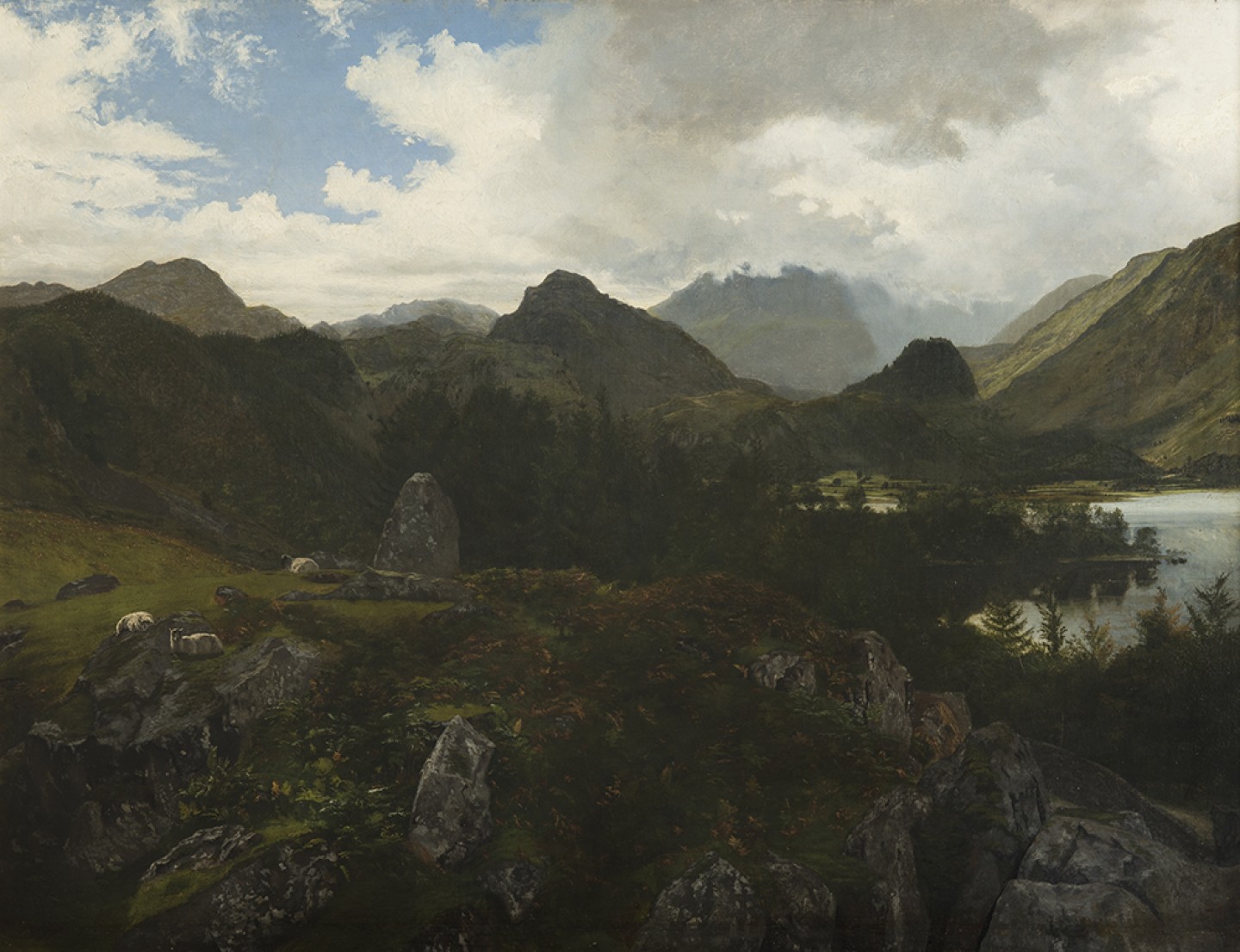DESCRIPTION
Bough was at his best dealing with the "hurry and bustle of the crowded wharves and quays of great seaports". Shipping on the Thames is a good example. It is almost certainly the painting titled The Upper Port of the Thames - Sun Rising Through Vapour, which Bough exhibited at the Glasgow Institute in 1863, leading the Glasgow Herald's critic to "think it was one of the best pictures which have yet issued from his prolific studio". It won a prize of thirty guineas for the best landscape and was selected by the Royal Association from the Promotion of the Fine Arts in Scotland to be engraved for its subscribers. Bough's trademark, his bulldog Madame Sacchi, can be seen on the stern of one of the boats in the left foreground. It has been suggested that the tower on the left is that of the old Billingsgate Market.
DETAILS
ARTIST PROFILE
Samuel Bough RSA, 1822-1878
Theatre scene painter, watercolourist and oil painter, Bough specialised in landscape and coastal and harbour scenes. A fine draughtsman, he delighted in portraying the dramatic in nature, be it a raging sea or a brilliant sunset. He had an excellent memory for details and effects. He also had a phenomenal speed of execution. A true bohemian, Bough was a rough diamond. He was intelligent and witty, but was often boorish and argumentative. Although he travelled through France, Belgium, The Netherlands, Norway and Germany, he considered that nothing could compare with Scotland's east coast or the English Lake District.
Born in Carlisle, Bough was encouraged by his shoemaker father to develop his artistic skills. Although he had lessons from several local artists, he was largely self-taught through studying the work of such painters as Constable, Turner or Copley Fielding. A job as a lawyer's clerk did not last long. He preferred sketching, wandering the countryside, often for weeks on end, attempting to capture he varying effects of sunlight, clouds, wind and rain.
In 1845 Bough went to Manchester as a scene painter at the new Theatre Royal, and three years later he moved to Glasgow as chief scene painter at the new Prince's Opera House. The turning point in his career came in 1849 when, following very favourable press comment, he produced some of his best work in Cadzow Forest. Following a short spell in Port Glasgow where he experimented with marine painting, he relocated to Edinburgh in 1855, remaining there for the rest of his life and achieving considerable success. He was elected an Associate of the Royal Scottish Academy in 1856, but conflict with the academy on several occasions meant that he had to wait nineteen years before being made a full Academician.






